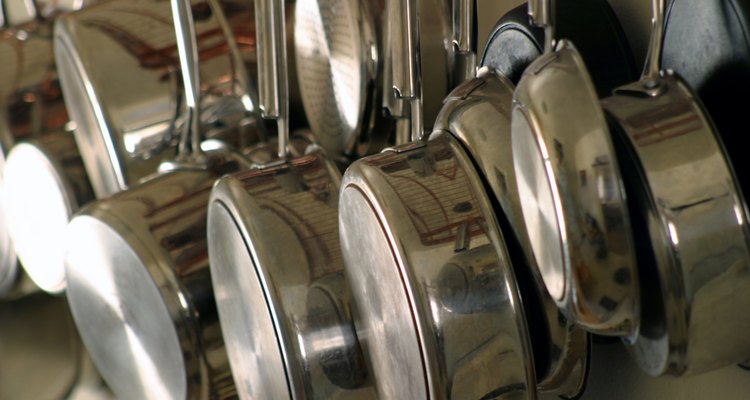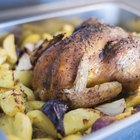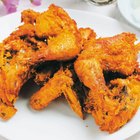
Madeleine Openshaw/Hemera/Getty Images
Stainless-steel cookware often is preferred among professional chefs, but less-experienced cooks may find it challenging to keep food from sticking. It is not necessary to season stainless-steel frying pans to get foods to brown and release easily, but you do need to take special care when dealing with more delicate dishes such as eggs or fish.
What to Cook
There is no limit to the types of food that can be cooked in a stainless-steel pan. The metal is nonreactive, which means it cannot be chipped, pitted or otherwise eroded by high-acid foods such as tomatoes or citrus fruit. Steaks and chops respond especially well to being cooked on stainless steel because the higher temperature tolerance helps ensure deep browning. Frying eggs and more delicate cuts of fish such as true sole and cod in a stainless-steel frying pan requires a touch more oil or butter. So if you thoroughly coat the bottom of the frying pan with fat when it is hot, you should be able to cook any food without it sticking.
Stainless vs. Aluminum, Enamel, Cast Iron and Nonstick
Aluminum conducts heat more efficiently than any other type of frying pan, but many stainless-steel pans have an aluminum core. This makes a stainless-steel frying pan a bit heavier than an aluminum one but – unlike aluminum – stainless steel does not react with acidic foods. Stainless steel is lighter and easier to handle than enamel or cast-iron pans. Keeping food from sticking to an uncoated stainless-steel frying pan may be more of a challenge than just using a nonstick pan at first, but once you get the hang of it, you easily can keep foods from sticking.
Cooking Tips and Techniques
Heat the pan until it is very hot, then add a few drops of oil, a pat of butter or another fat and quickly swirl it to coat the bottom of the pan. This closes the microscopic pores in the pan to which food can stick. Turn down the heat, add more oil, then add the food. Once the pan is heated almost to the smoking point, it holds that heat at a lower temperature and browns the food without scorching it. Avoid using aerosol cooking sprays with stainless steel because the chemical propellant they contain can leave a dark residue that is unattractive and hard to remove. Do not add salt directly into an empty stainless-steel frying pan; add it to a liquid or immediately mix it in with the food you are cooking to avoid white spots developing on the pan. Don’t overcrowd a stainless-steel pan because this can lower its temperature and prevent food from developing brown crust.
Cleaning and Storage
Clean your stainless-steel frying pan with dish liquid and hot water as soon after cooking as possible. Use a nonabrasive sponge, plastic scrub sponge or soft dish brush. Rinse the pan thoroughly to make sure you have removed all of the soap residue. Never use abrasive cleansers or cleaning utensils with a stainless-steel frying pan because this can cause scratches or pitting, which makes it harder to keep food from sticking.
Related Articles

Why Does Food Stick to a Non Stick Pan?

Are Nickel Lined Pans Safe?

How to Cook Rib Eye Steak in an ...

The Best Types of Pans to Cook ...

How to Fry Hamburgers Without Smoke

How to Use Oil in a Nonstick Pan

How to Refinish Cast Iron Cornstick Pans

Can You Grease a Pan With Canola Oil?

How to Pan-Sear Swordfish

How to Use Smartware Cookware

How to Use an Indoor Electric Grill

Can I Deep-Fry the Food the Night ...

What Are the Dangers of Titanium in ...

Glass Pie Pan Baking Tips

Is Cooking in a Conventional Oven ...

How to Fry With Bread Crumbs

The Positive Effects of Using a ...

Alternatives to a Deep Fryer

Recipes for Enameled Cast Iron Cookery

Can You Cook Bone-in Chicken in a Metal ...
References
Writer Bio
Brynne Chandler raised three children alone while travelling, remodeling old homes, taking classes at the Unioversity of California Northridge and enjoying a successful career writing TV Animation. Her passions include cooking, tinkering, decorating and muscle cars. Brynne has been writing fun and informative non-fiction articles for almost a decade. She is hard at work on her first cookbook, which combines healthy eating with science-based natural remedies.
Photo Credits
Madeleine Openshaw/Hemera/Getty Images